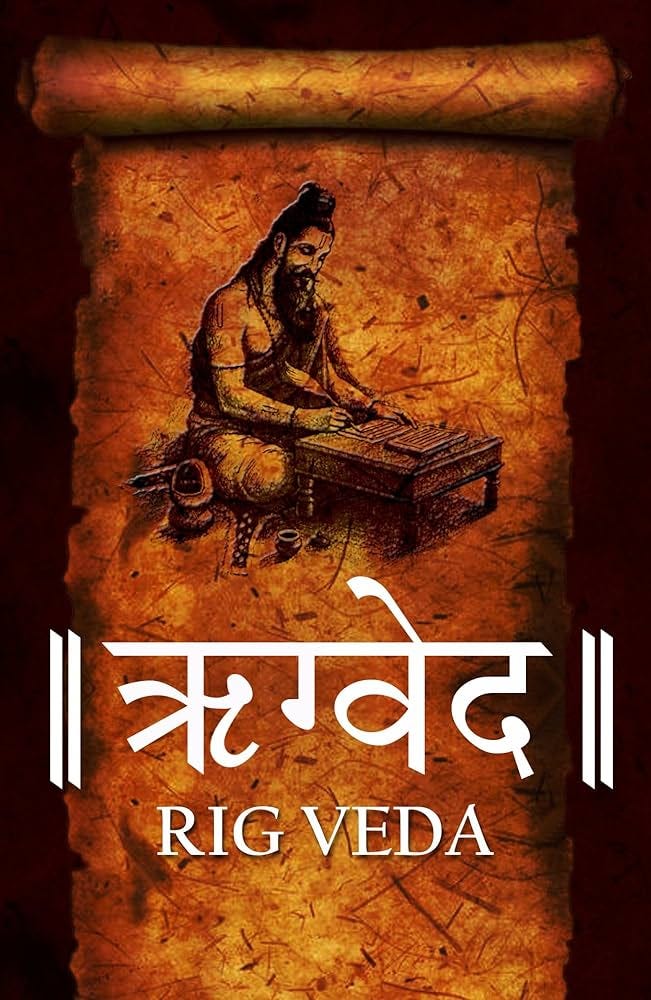Rig Veda is the oldest of the four Vedas, containing 1028 hymns and 10,600 verses divided into 10 mandalas( books). These hymns are dedicated to Rigvedic deities, and discuss cosmology too. The verses in it, are recited to date in certain ceremonies like weddings and religious prayers.
The hymns are dedicated to various Gods, the main ones being Indra, Agni and Soma. The Adityas, as well as Mitra-Varuna, Ushas are mentioned. Apart from Savitr, Vishnu, Rudra, Brihaspati, the Rig Veda also pays respect to various natural phenomena. Dyaus( the sky), Prithvi( Earth), Surya( sun), Vayu( wind) are invoked as well as the various rivers and groups of deities.
The 10 Mandalas or books are grouped as follows
Mandala 1- The first hymn dedicated to Agni, remaining to Agni and Indra. Varuna, Mitra, Surya, Rudra, Vishnu are also mentioned.
Mandala 2–43 hymns primarily on Agni and Indra, believed to be composed mostly by Rishi Gritsamada.
Mandala 3- 63 hymns dedicated to Agni, Indra and Vishvedavas.
Mandala 4- 58 hymns mainly dedicated to Agni, Indra, Rbhus, Vayu. Most believed to be composed by Vamadeva.
Mandala 5–87 hymns dedicated to Agni, Indra, Visvadevas, Maruts, Asvins and Mitra-Varuna. Most of them are composed by the Atri clan.
Mandala 6- 75 hymns mostly to Agni, Indra, Pusan, Ashvin etc and believed to be composed by the Barhasaptya family.
Mandala 7- Most of the 104 hymns here composed by Vaishastha Maitravaruni, dedicated to Agni, Indra, Maruts, Mitra-Varuna and two each to Saraswati.
Mandala 8- Mostly composed by the Kanva clan, and dedicated to various gods.
Mandala 9- Has 114 hymns dedicated entirely to Soma( the sacred potion) and it’s cleansing.
Mandala 10- This contains the Nadistuti Sukta which praises the Rivers and helps us to understand the geography of that period. It also contains the Nasadiya Sukta dealing with the creation, and the Purusha Sukta. Also contains the hymns one traditionally chants in marriage and death rituals.
Brahmanas are the commentaries on the Rig Veda and the most prominent ar Aitreya and Kaushitaki. The Aitreya primarily deals with Soma sacrifice, while the Kaushitaki in it’s first 6 chapters, deals with several kinds of haviryajna or offerings of rice, milk and ghee.
These 2 Brahmanas are supplemented by an Aranyaka or a Forest Book, which primarily details the philosophy behind the ritual sacrifices. The Upanishads on the other hand are called the Vedanta and the Aitareya is the Mukhya Upanishad associated with Rig Veda.




